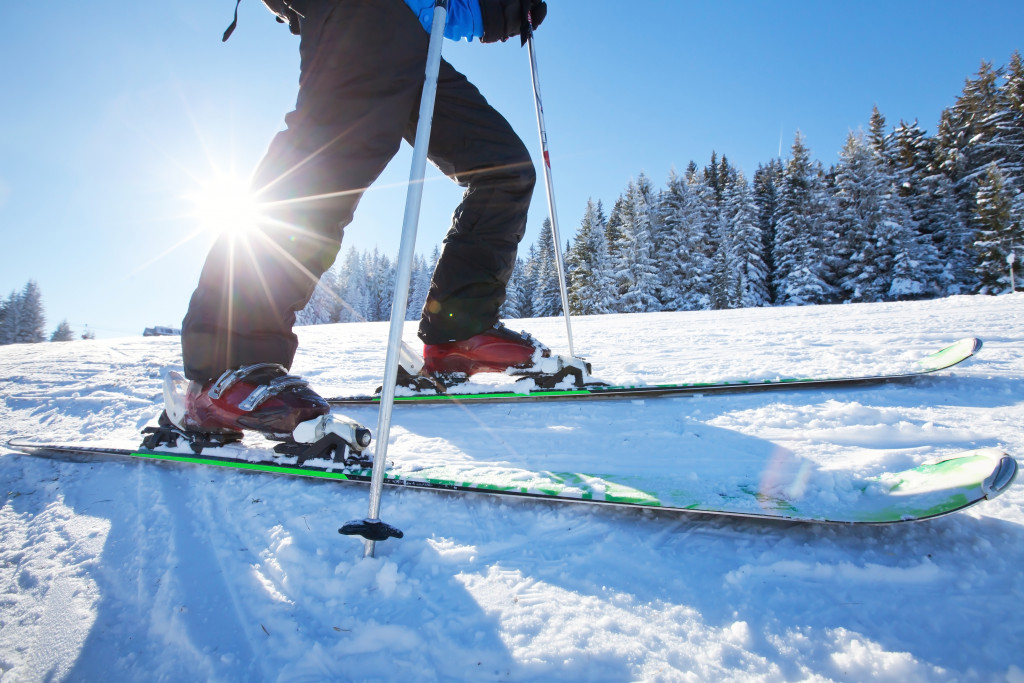While many people are passionate about sports, such as football, baseball, and basketball, some adventurers prefer snowboarding, ice-skating, and sledding. The one thing that both types of sports enthusiasts have in common is that they are both at risk of getting injured. Sports and leisure injuries may have dropped by 27% in 2020, but this does not mean they will never rise again.
However, it is true that compared with summer recreation, the risk of injury is higher while engaging in snow sports. Hence, we will discuss precautionary methods that can help lessen the intensity of incidents and prevent serious accidents in winter activities.
Preventative steps to dodge snow sports hazards
Do you want to have fun skiing, ice skating, or indulging in other icy activities but fear ending up in the hospital? Don’t sweat, as you’re not alone in this. It is natural to be worried about a possible concussion, shoulder dislocation, skier’s thumb, spine injuries, fractures, and other severe injuries resulting from a single slip-on snowy terrain.
What you can do is take note of some important things before heading to your activities. You must wear protective gear and sports-friendly clothing. For instance, Holden, Bogner, and Obermeyer pants and jackets are among the few brands that make the best gear since they are stretchy, waterproof, and breathable. Similarly, there are several more aspects to consider, all of which are discussed in detail below.
Check forecast
The weather is unpredictable and cannot be controlled. It is, therefore, a good idea to check the weather forecast before going out to start exciting winter activities. You may think it’s warm and pleasant to consider snow sports judging by the current conditions, but this may change drastically once you are out. It has become even more challenging because nowadays. It has reached a point that even experts question the future of snow sports in relation to drastic weather changes because such shifts can increase the risk of injury and death.
Bring company
Even solo winter activities should be done in the presence of someone you know. That way, if something goes wrong, someone will be able to respond immediately and get help. In addition, timely medication and treatments help to avoid life-threatening situations. As a result, never go alone and always bring company.
Warm-up
As the temperature decreases, your muscles tighten, and your blood vessels shrink. Insulation is therefore essential to relax the muscles and prevent cramps and potentially life-threatening situations. Warming up before participating in any sport, especially winter sports, is necessary to maintain your heart and muscles in excellent health.

Rest time
Give your tired muscles a rest and yourself a chance to hydrate and recharge constantly. Exertion puts you at risk of injury. Therefore, you must take frequent breaks to re-energize.
Protective gears
Did you know that protective gear is not only helpful in minimizing injuries but is also effective in preventing them altogether? The most vulnerable organ is your skull, as a single strike increases the likelihood of brain damage. Invest in a high-quality helmet with a solid external and a shock-absorbing coating. To avoid fractures, get padding for your arms and legs, as well as eyewear to protect your eyes.
Double-check your equipment
Check your equipment, such as snowboards, skis, ice skates, and sleds, because even a slight fault or defect might lead to a hospital visit or even death. If you do have broken stuff, have it repaired or, better yet, replaced.
Appropriate attire
When it comes to sportswear, don’t be economical; instead, invest substantially in quality companies. As previously said, wearing high-quality pants, jackets, shoes, woolen socks, insulated gloves, and so on not only keeps you warm and comfy but also protects you from windburn and frostbite. Also, ensure that they are loose fitting and stretchy to allow for easy movement.
Right techniques
Don’t do something you haven’t mastered, let alone know the fundamentals. It is best to take professional training or research on strategies, such as proper movement or positioning, to avoid falling. Then, educate yourself or perform under the supervision of an expert.
Know your expertise
Make smart choices when you do something new and challenging. Know your area of expertise and stay within your degree of experience. Still, if you want to take on a challenge, make sure that you have thoroughly practiced with proper research or with a professional. It is preferable to be safe and have less fun than to be sorry.
Familiar environment
Always play it safe and stay in a familiar setting to prevent unnecessary dangers. Know your surroundings and examine hazards, such as rough ground, large rocks, and thin patches, ahead of time.
Don’t allow fear to keep you from enjoying the winter. Injuries happen and are a natural part of life, especially in sports. Take the necessary precautionary measures and seek immediate help in case of emergency.

